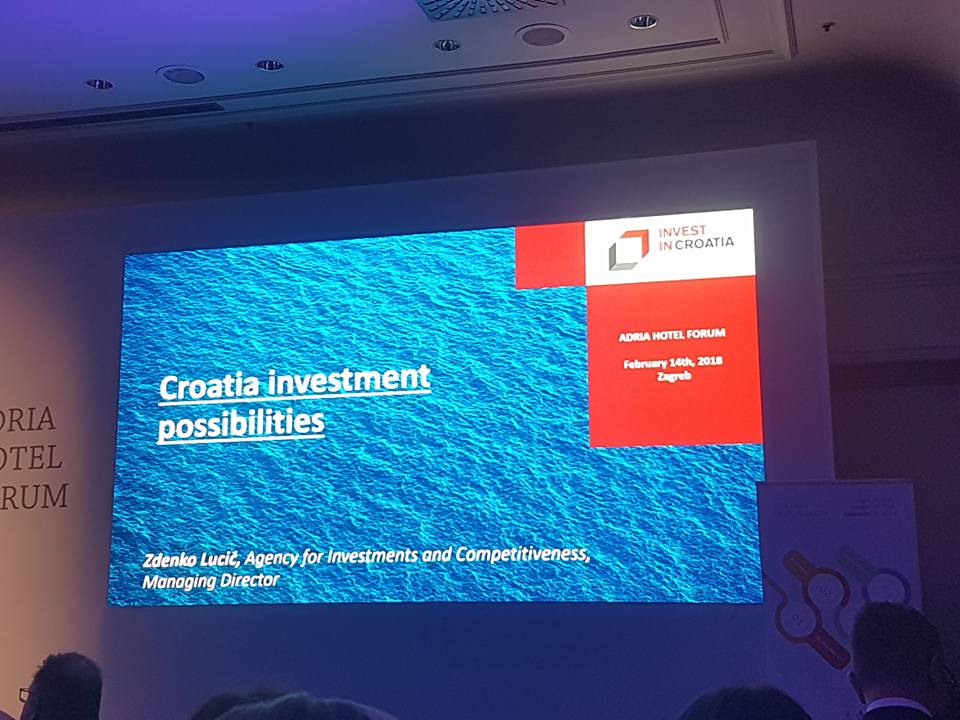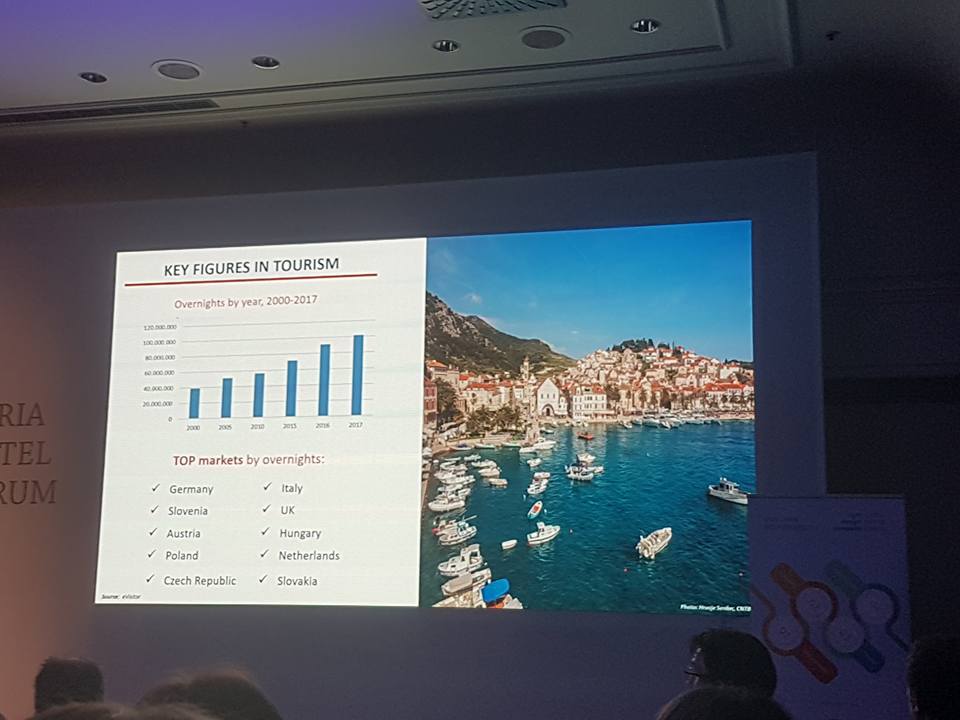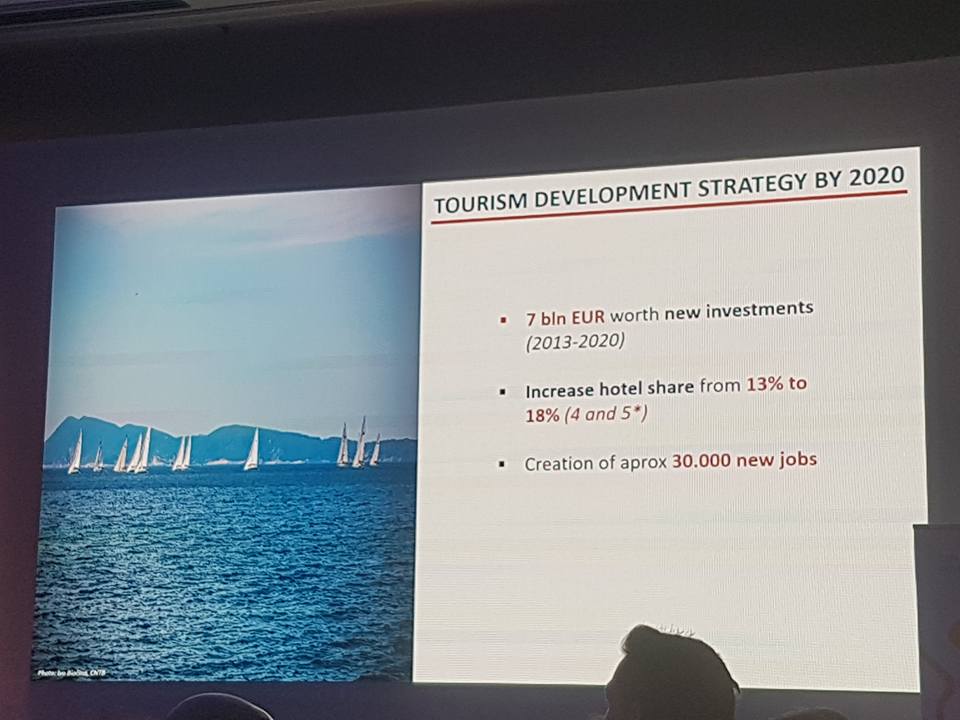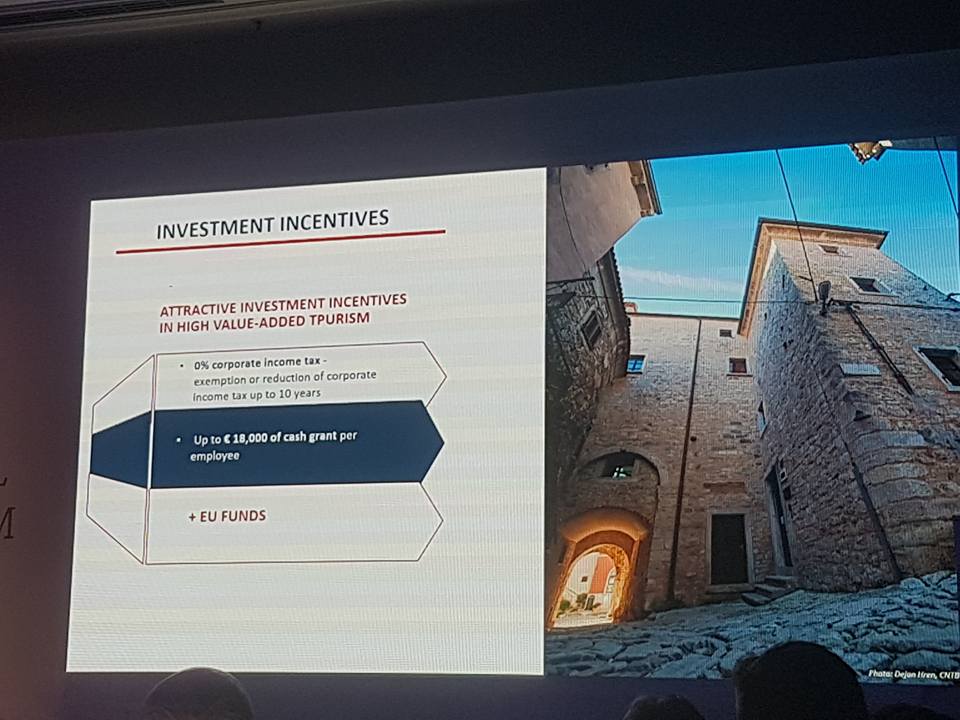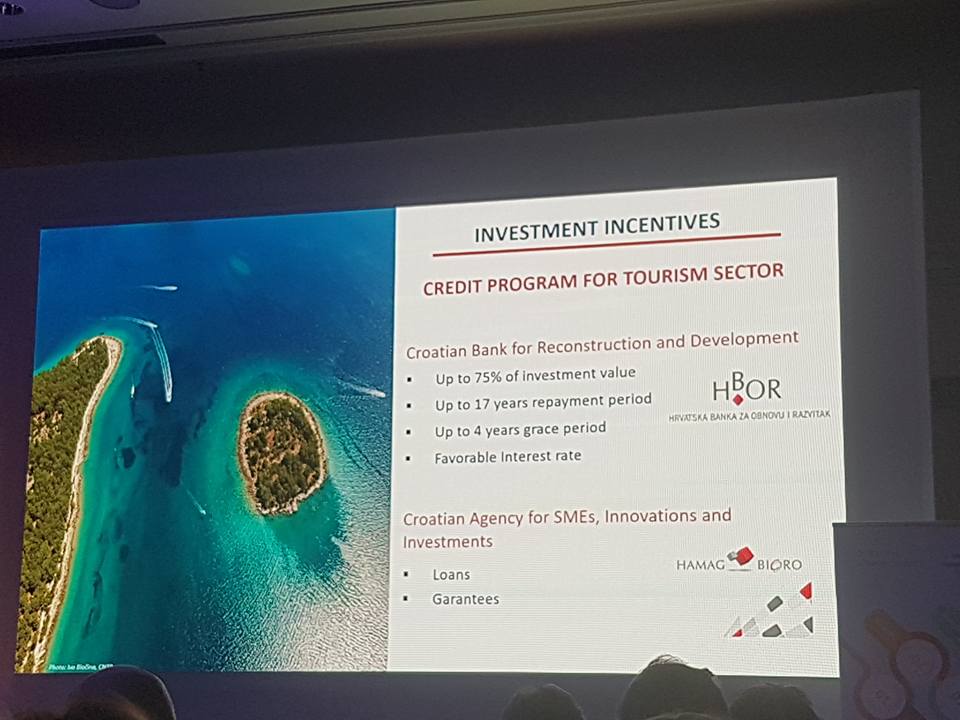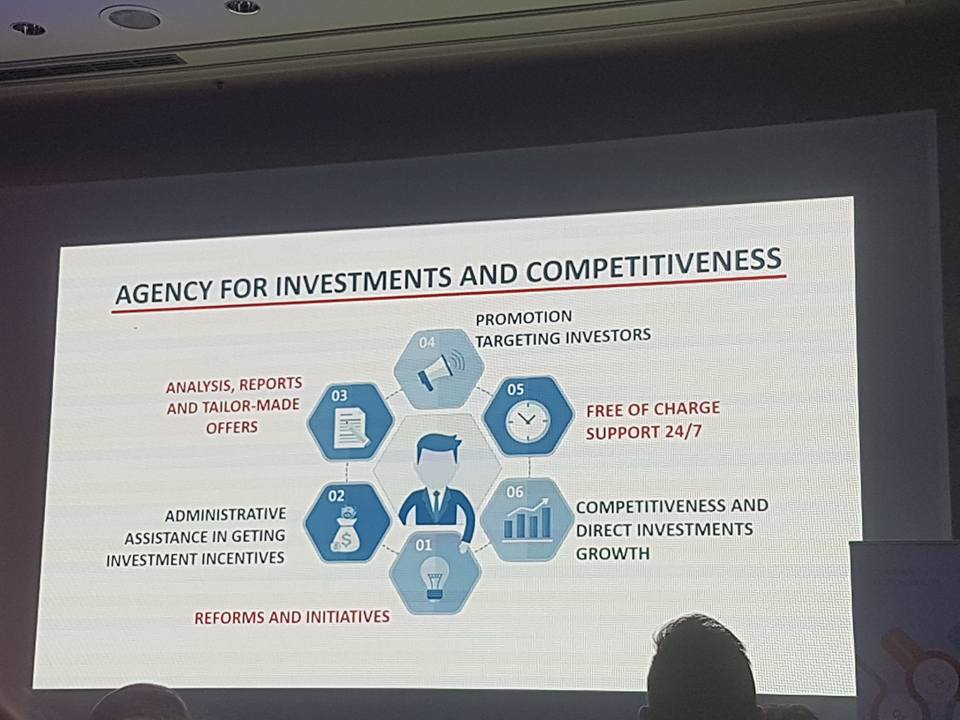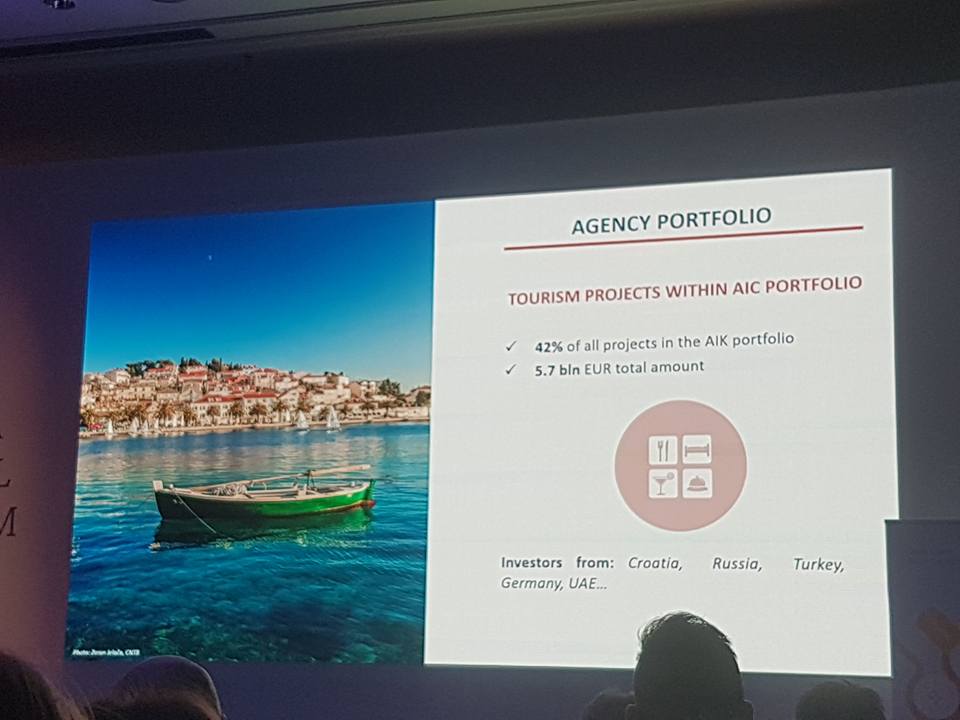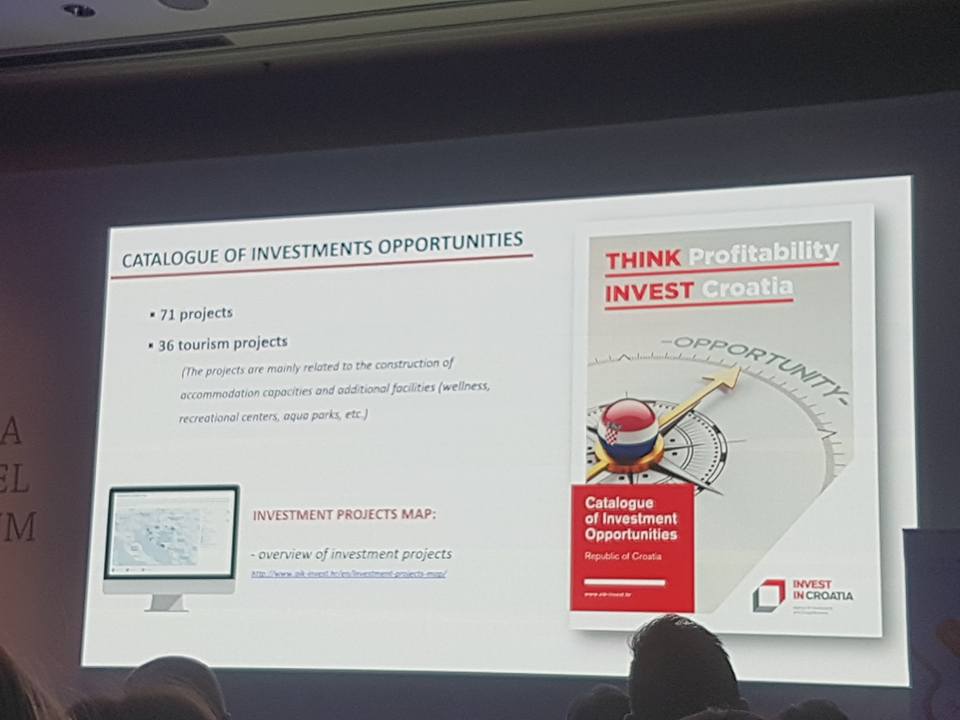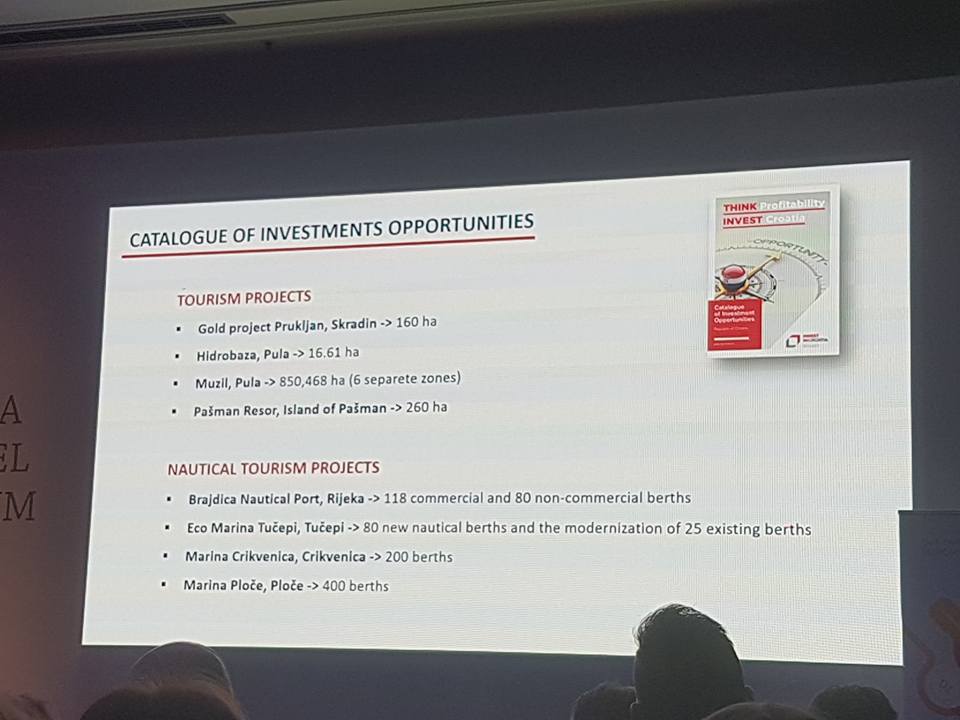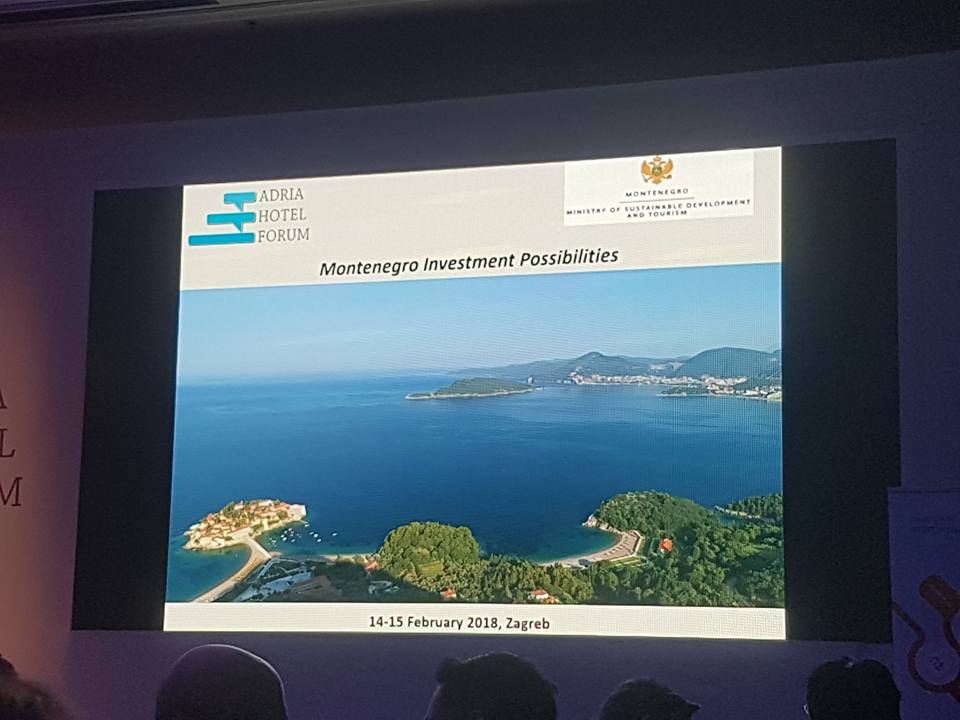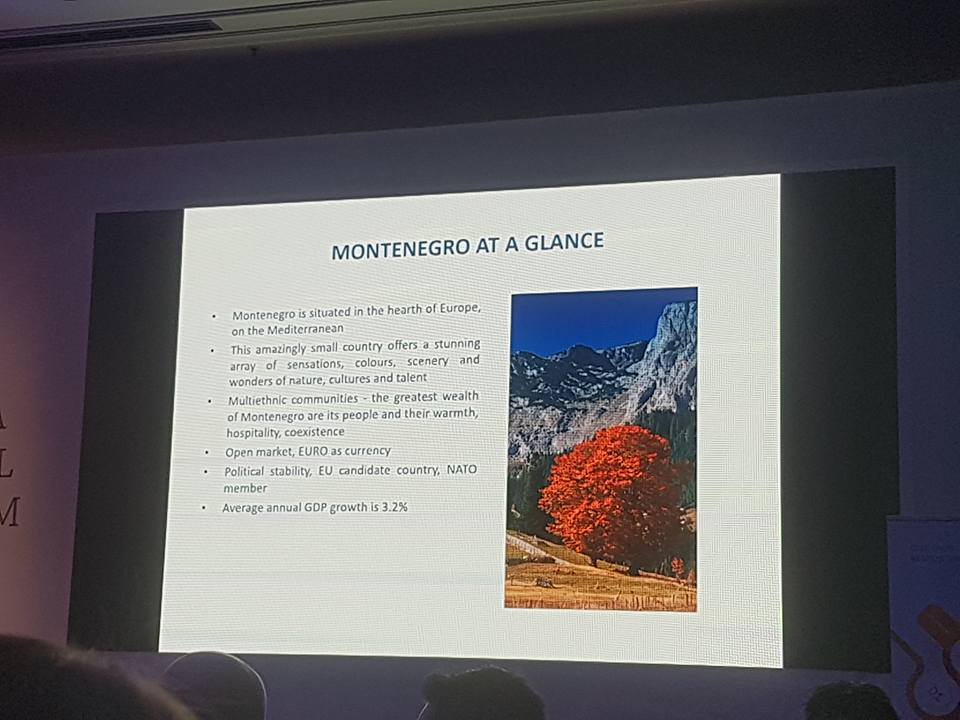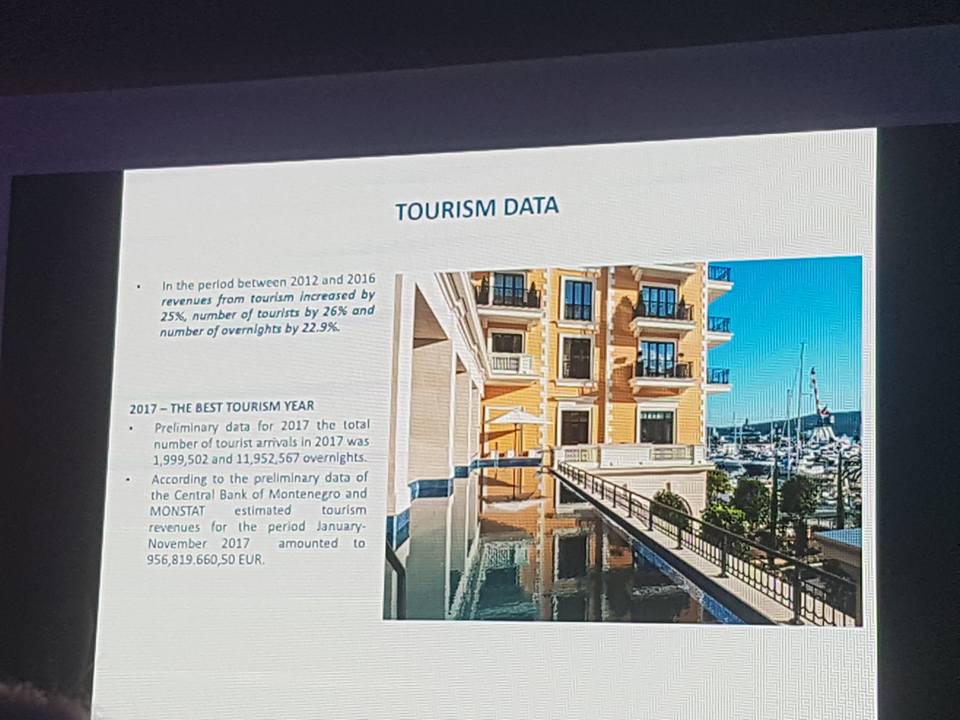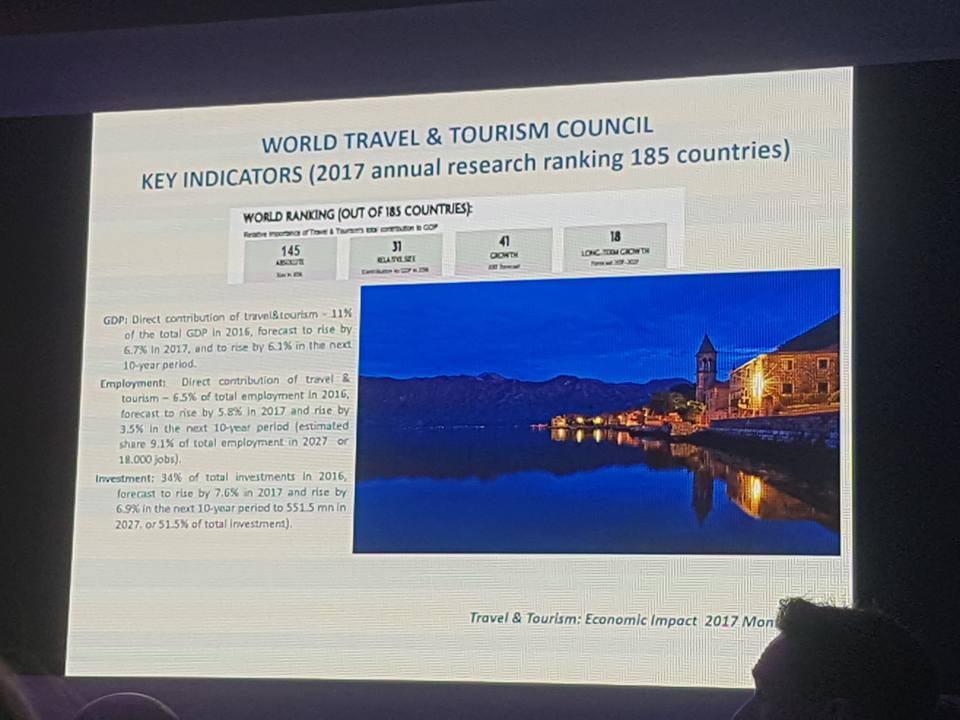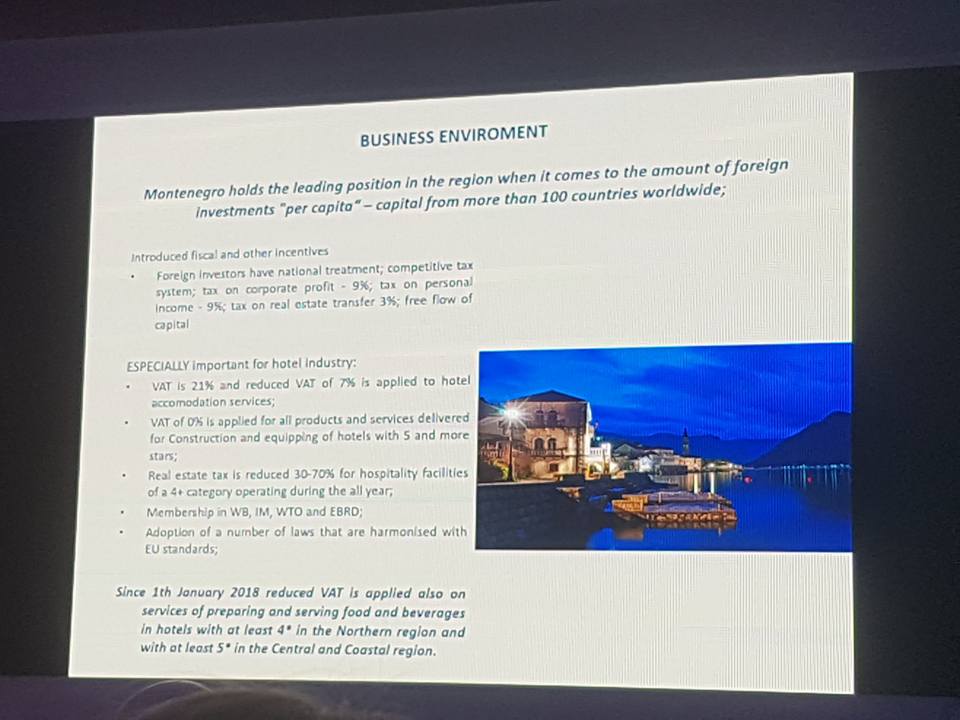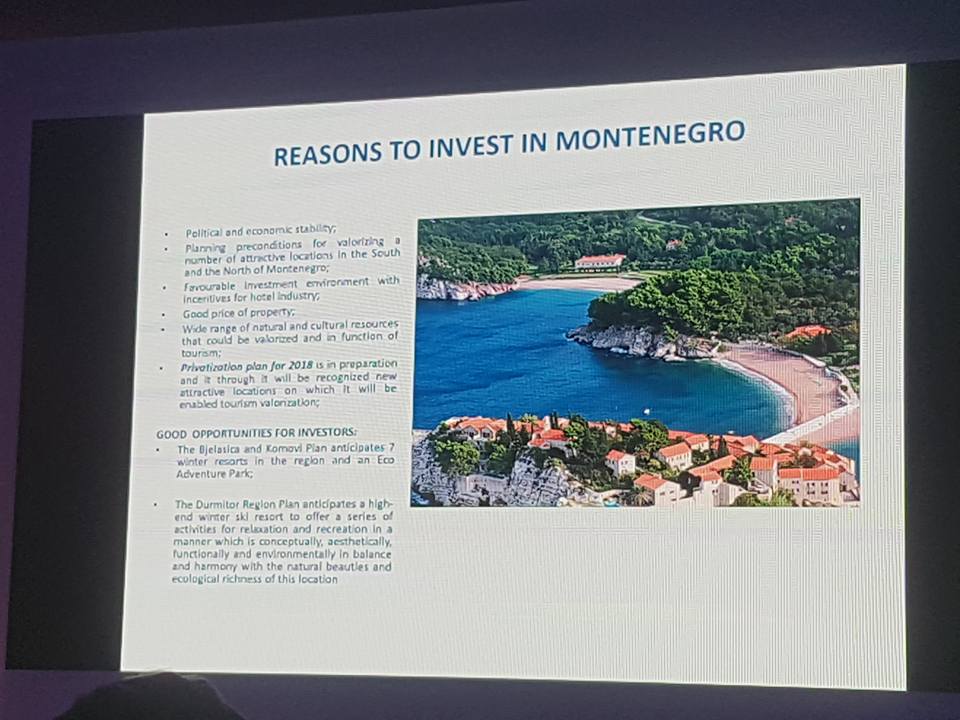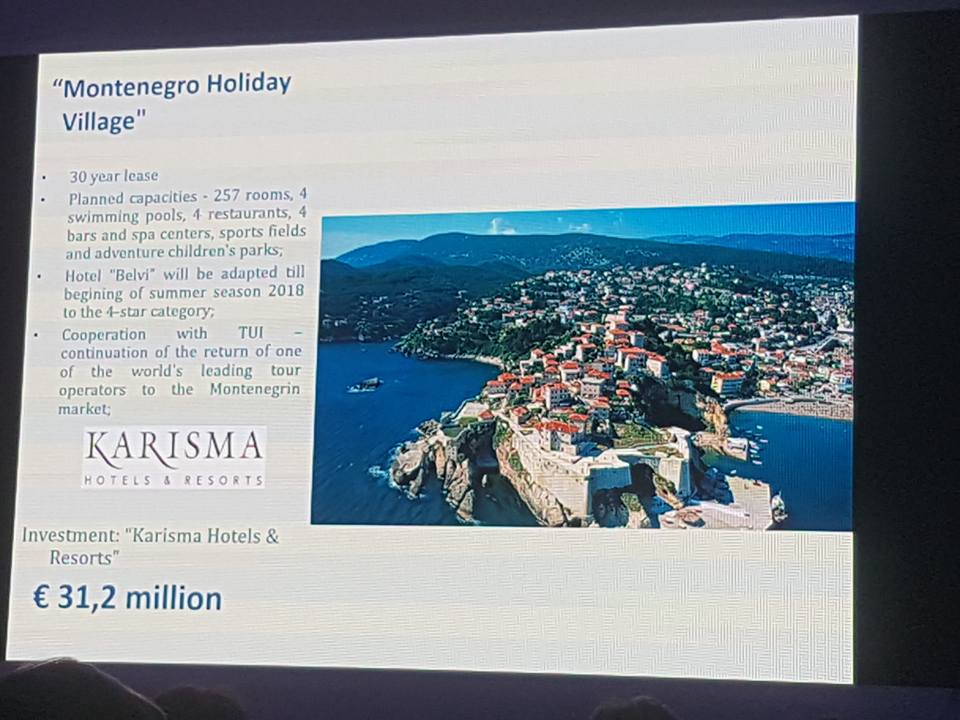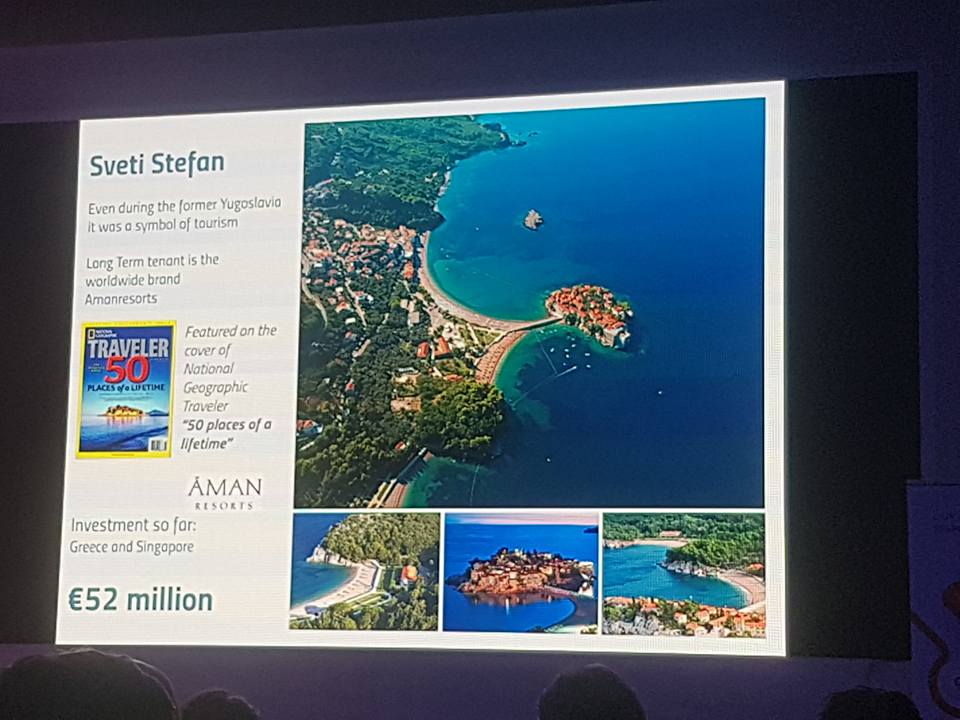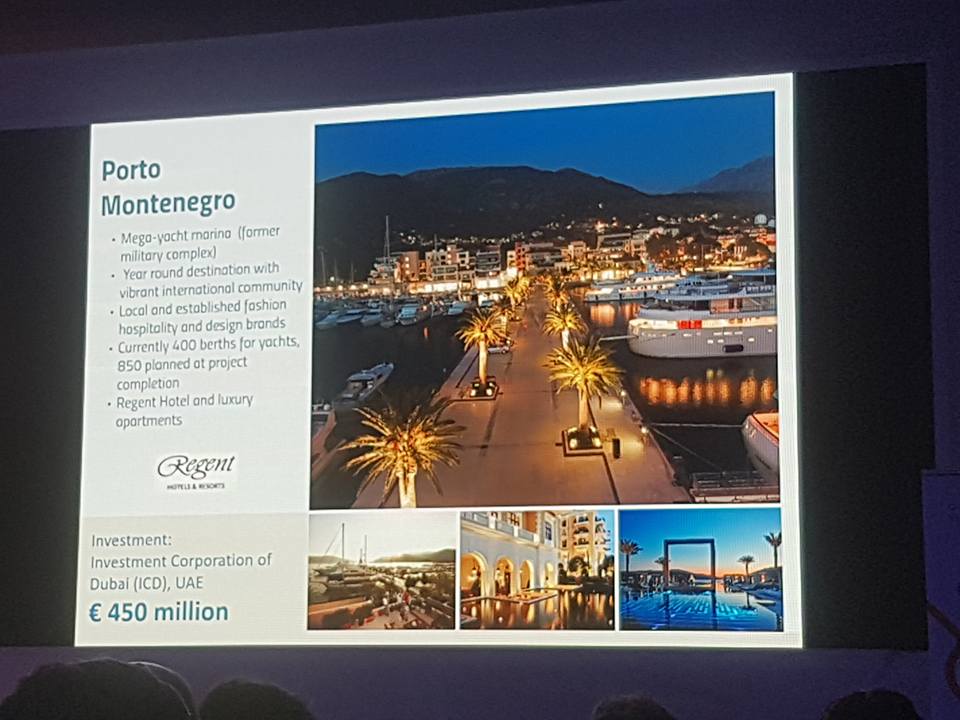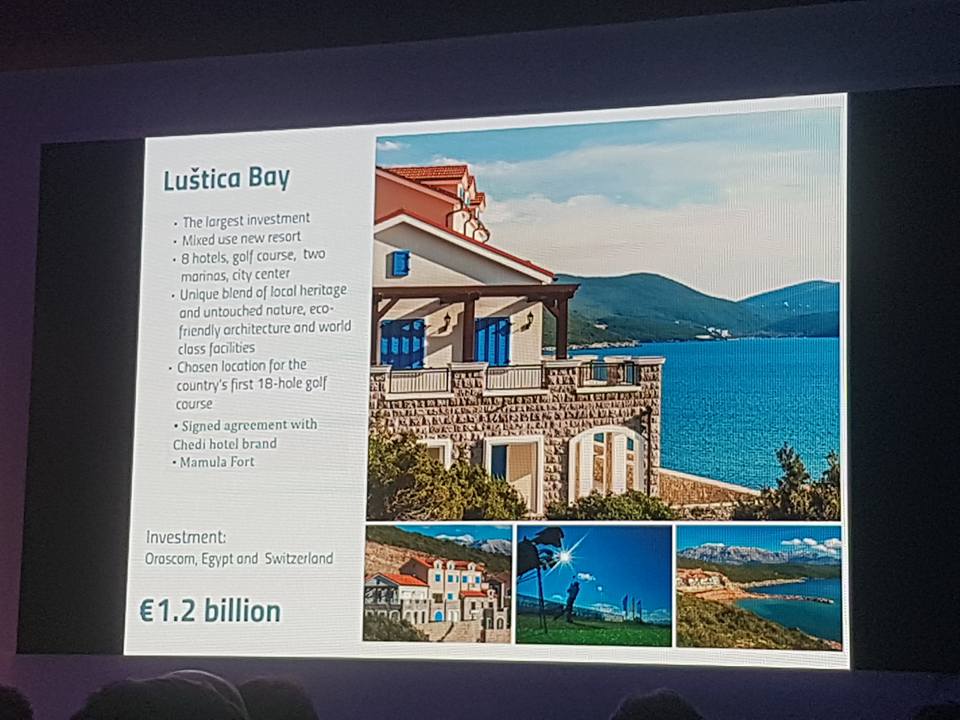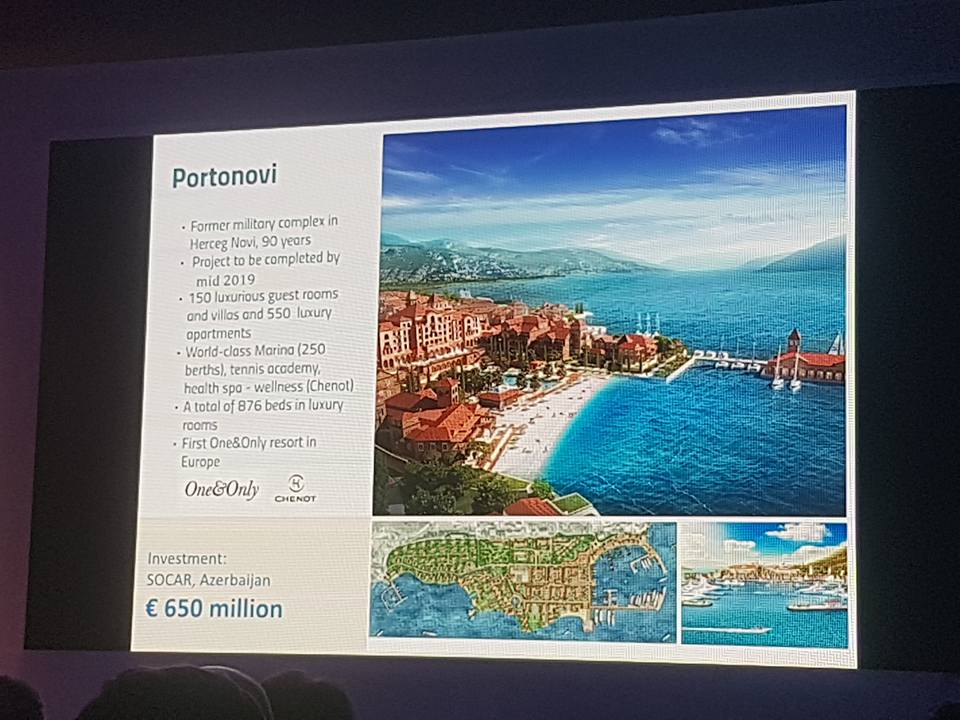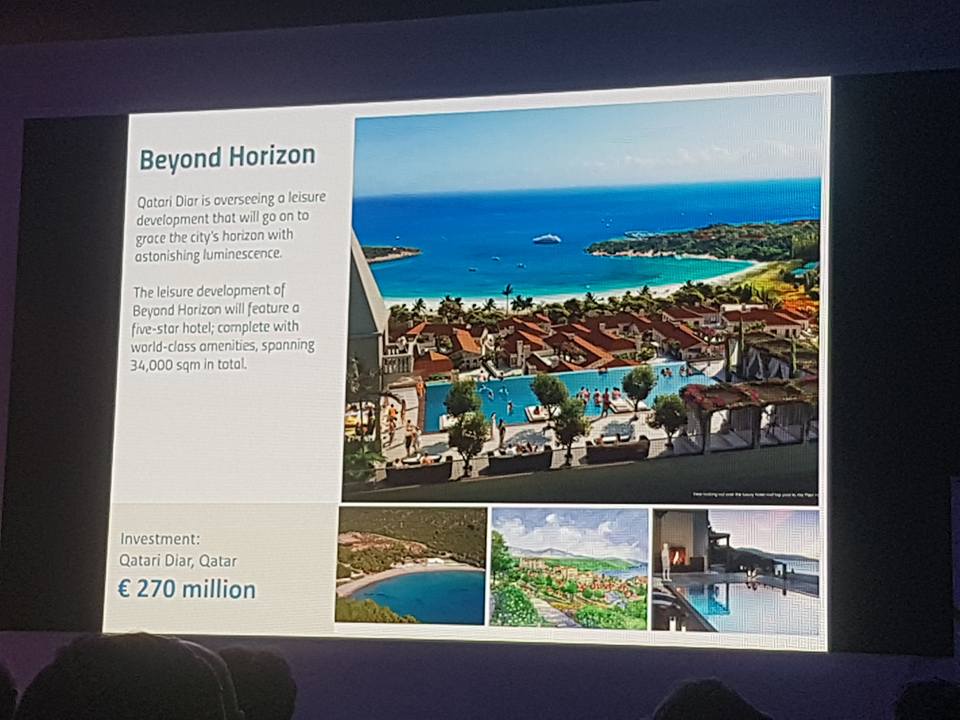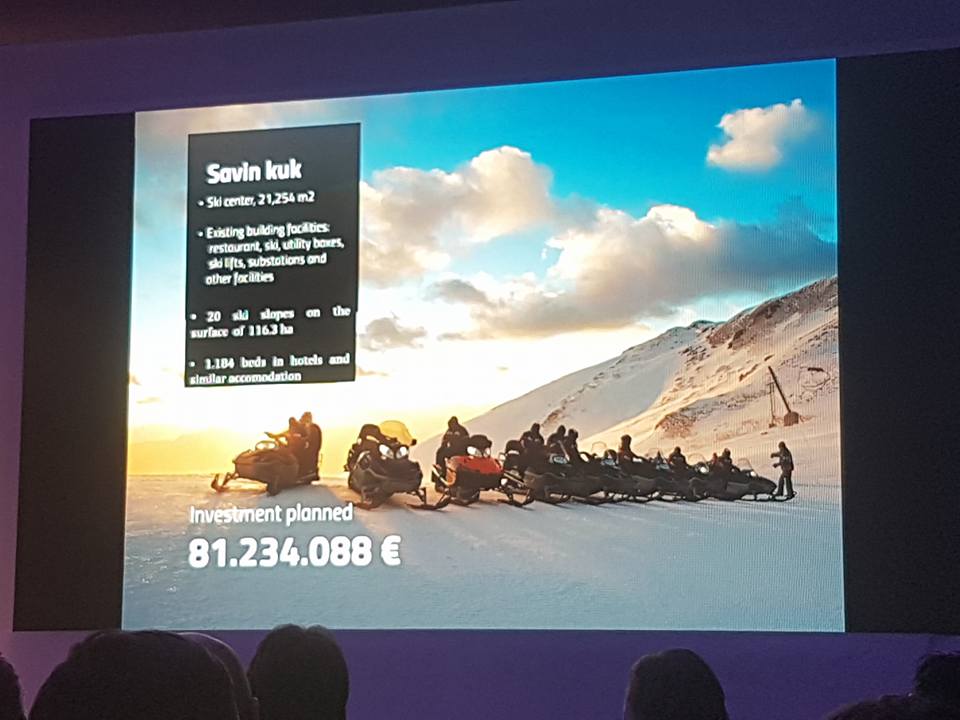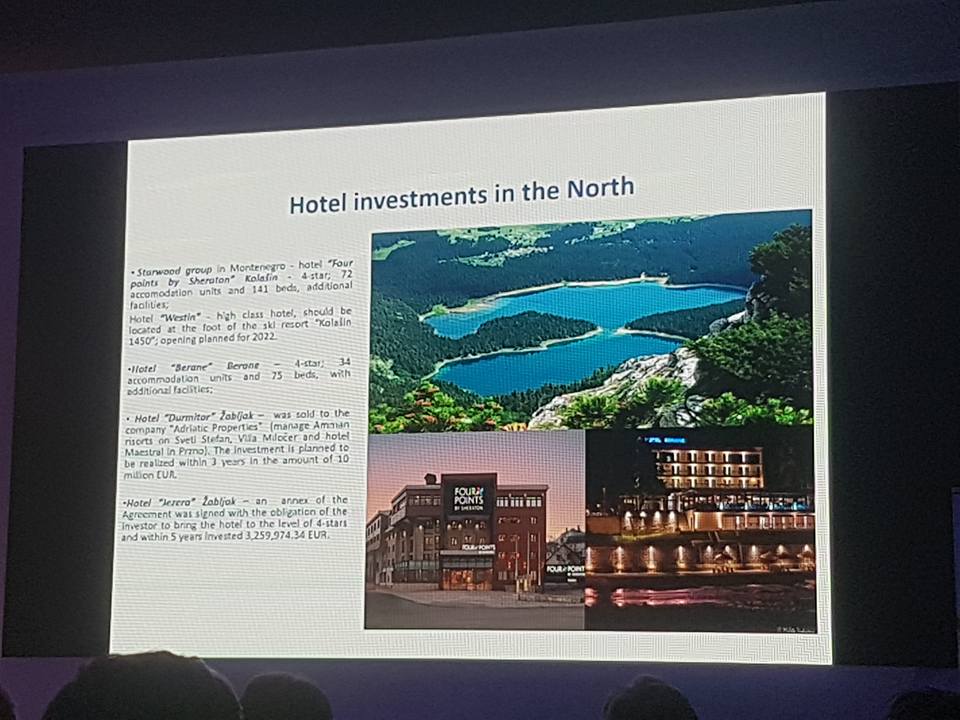February 16, 2018 - As foreign billions from all over the globe pour into Montenegro's luxury tourism sector, the situation in Croatia is quite the opposite. A little investigation after the excellent Adria Hotel Forum at Hotel Sheraton this week reveals just how far behind the curve Croatia is, and just how disorganised its approach to foreign investment is.
I am really not sure where to start.
My recent trip to Montenegro and the new 7 million m2 luxury development of 1.2 billion euro at Lustica Bay blew my mind. After 15 years living in Croatia, was it really possible that such a fantastic project, including 7 hotels, complete new village and entertainment centre, 18-hole golf course and two marinas, could actually be happening? A project which would create 2,500 permanent jobs and was currently employing 530 construction workers, 45% of whom were Montenegrin, according to the Lustica Bay PR department when I enquired.
This on top of the multi-million investment in Porto Montenegro, the catalyst for Montenegro's emergence on the luxury tourism scene after years of poor urban planning and overbuilding along some parts of its coast. And there were several more developments with more than 100 million euro being invested. On the long drive back to Varazdin, I asked myself where were the similar projects in Croatia. With six times the population, nine times the annual tourism, and who knows how many more kilometres of coast. If the billions and hundreds of millions of foreign investment were going into Montenegro, what was happening in Croatia?
I knew of several projects with hundreds of millions of foreign cash to be invested in Croatia where things were NOT happening: close to a billion euro in the ill-fated golf development above Dubrovnik; 270 million euro (and 500 jobs) at the Nikki Beach Resort on eastern Hvar, where ownership is still not secured 11 years after the pre-contract and downpayment was arranged; the 100 million euro plus Brizenica Bay resort, also on Hvar, publicly backed by the Minister of Tourism and slated to open next year (no construction so far); and the reconstruction of Hotel Belvedere in Dubrovnik with a Russian investor, which is currently blocked by local objections, I understand.
So where are the investments which ARE being realised? As luck would have it, this week hosted the annual Adria Hotel Forum in Zagreb, and rather excellent it was. I rarely have time to go to conferences, but when I saw that both Croatia and Montenegro had been allocated exactly 7.5 minutes each to present their tourism investment portfolios to the international hotel investor community, I knew I had to go.
It was quite an education, and a reminder of what an incredible country Croatia COULD be if it had the people in power whose interests went beyond their own. People who knew how to spell the word 'accommodation' at an international hotel conference, for example.
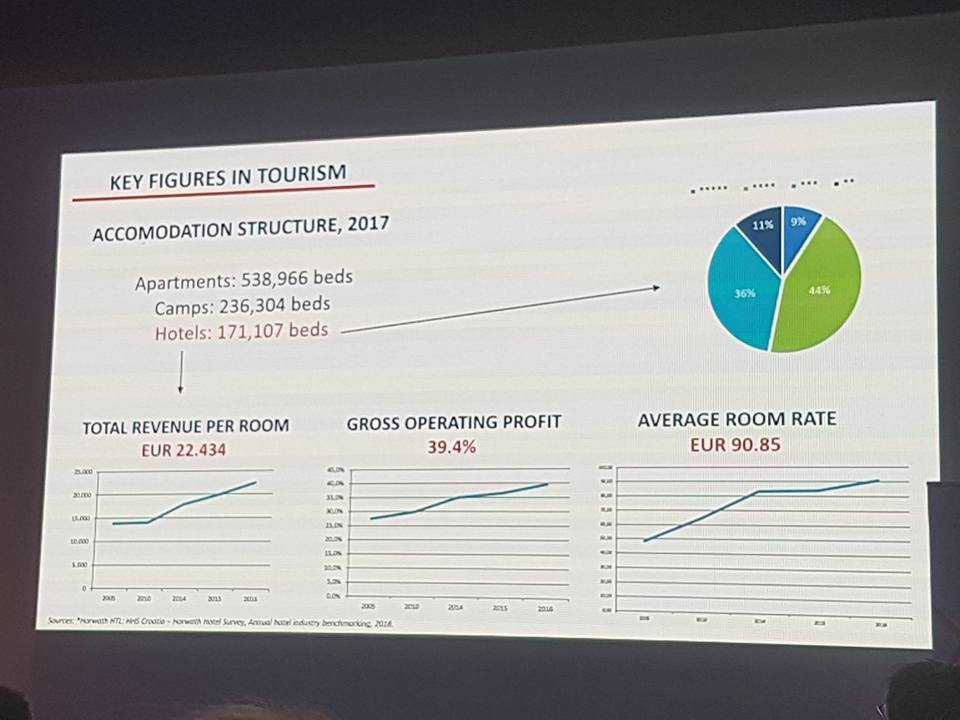
And even if one person in the agency does not know how to spell a word, surely there are others who do. Spellchecker, anyone? But this is a minor detail compared to the rest of my small investigation. But presenting to an international conference on hotels and unable to spell the word 'accommodation'? Bravo, Hrvatska!
When you have only 7.5 minutes to impress, every slide and every second counts (I have attached the presentations, slide by slide, for both Croatia and Montenegro below), and each word is crucial. I particularly enjoyed the first slide, that all-important first impression, from Croatia.
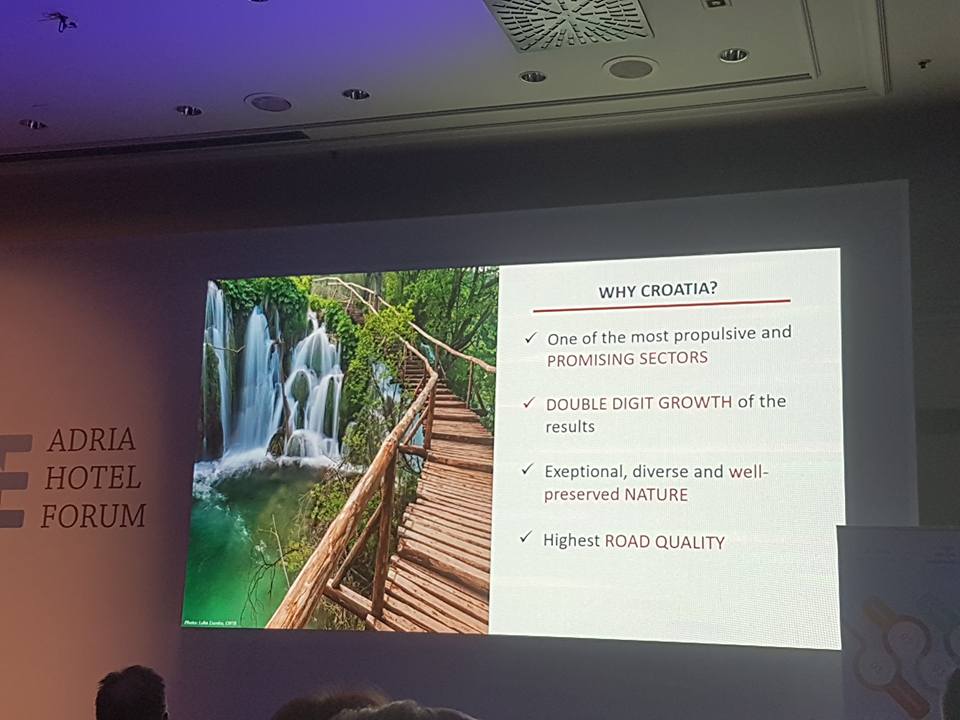
Leaving aside the exeptional spelling of 'exceptional', I stared at these four key points, the gateway to tourism investment in Croatia.
"One of the most propulsive and PROMISING SECTORS." Apart from learning a new word for describing a sector, it didn't really say anything.
"DOUBLE DIGIT GROWTH of the results." I was beginning to think I was in the middle of a Monty Python sketch.
"Exeptional, diverse and well-preserved NATURE." Apart from the exeptional spelling, an innocuous statement.
"Highest ROAD QUALITY." Haha, just ask the residents of Omis, quipped someone behind me.
The all-important first impression had been made and, apart from an entertaining use of capital letters in the first slide, I had learned nothing of substance about Croatia as a tourist destination. But we did get to something meaty quite soon.
Or at least I thought we did...
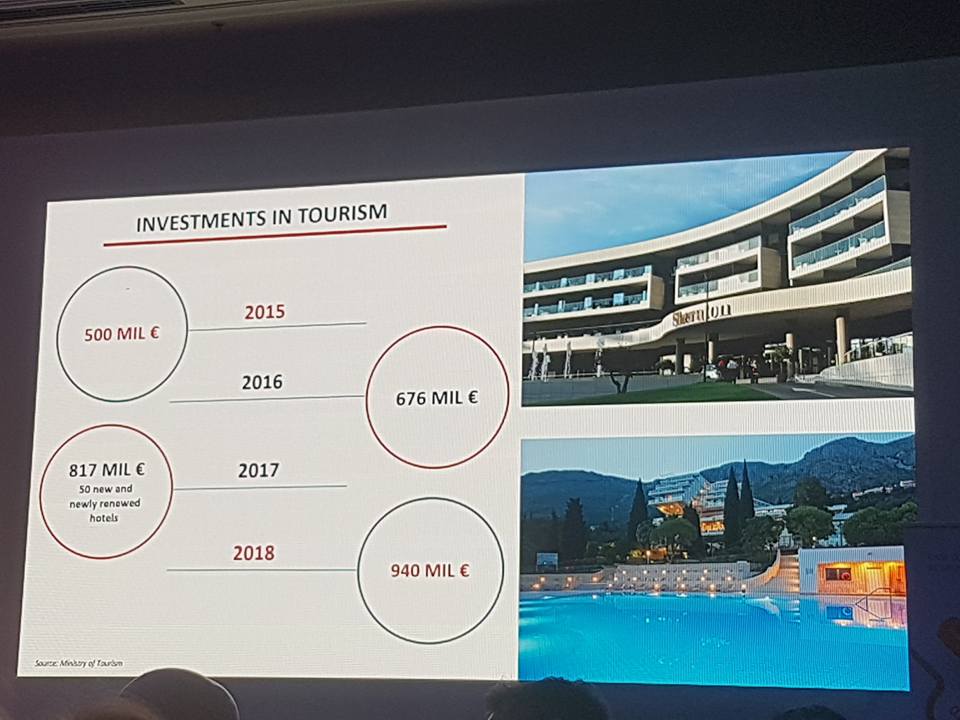
It is an inescapable fact that tourism officials in Croatia love to throw numbers at you. The quality of the tourism does not matter, as long as the numbers are good. 18.5 million arrivals, up X% on last year, 3 million passengers, up X%, etc etc. If promoting tourism was about spouting numbers, Croatian tourism would win Olympic Gold. Here is another number which is not spouted very often, but explains where Croatian tourism is going. Number of hotels in Hvar Town in 2017 - 29. Number of hostels in Hvar Town in 2007 - zero.
"Is it better to have one tourist spending 10,000 euro a stay, or 100 tourists spending 100 euro?" A question I was asked over dinner in Porto Montenegro.
So according to our exeptional accomodation presentation, Croatia was going to enjoy 940 million euro of investment in the tourism sector in 2018, a big increase on previous years. Great news! But where exactly was this investment coming from? A little Google research brought me to the excellent and reliable Poslovni.hr, which had a report on the 940 million euro investment, which Croatian speakers can read here.
Of the 940 million, as far as I could see, about 300 million was from two foreign investor projects - Four Seasons Brizenica Bay on Hvar and Hotel Belvedere in Dubrovnik - where nothing is currently happening due to paperwork issues. So we are down to 640 million. All the other projects seemed to be from Croatian companies rather than foreign brands. Intrigued, I looked for official answers and contacted the agency behind the exeptional accomodation presentation to ask them two things - to give me some details on which projects broke comprised the 940 million euro for 2018, and to give me a list of the top 5 biggest tourism investments on the Adriatic and the amounts.
This being Croatia, the lady at AIK Invest explained that no information could be given without an official email request. That procedure having been fulfilled, I was then surprised to learn that the agency in charge of dealing with foreign investors had no information about the detail of the 940 million. For that information, we had to talk to the Ministry of Tourism. She was extremely helpful, forwarded my email to the ministry, and then sent me an email with the top 5 investments (we will come to this shortly), all within an hour. Very efficient (and thank you).
I called the number at the ministry and was met by a very polite young man who had already received my email but, in order to deal with my request, I had to send him an email request directly. Have done this, he too was extremely obliging and quick - also within an hour (thank you). Very helpfully, he supplied the information in both English and Croatian. Here is the English version:
I am sending you the data below. These investments are the biggest after previously mentioned Hotel Park in Rovinj, Four Seasons and Belvedere. According to the data submitted to the Ministry of tourism, approximately EUR 940 million will be invested in tourism during the year 2018. Of that amount, the private sector will invest about EUR 628 million in its tourism projects, while the public sector, ie counties and cities and municipalities in their area will invest EUR 311 million. The largest amount of investments is planned in Istria. Valamar is investing in the construction of the Maro Hotel - Valamar Girandella Resort and reconstruction of the existing facilities Valamar Argosy and Valamar Pinia Suites. The Plava Laguna is investing in the reconstruction of the hotel and tourist resort Laguna Park in Poreč. Most of Istraturist Umag's investment relates to the reconstruction of Hotel Sol Umag and the AC Stella Maris camp.
In the County of Primorje-Gorski Kotar, Jadranka is investing in the reconstruction of Hotel Punta and Hotel Punat in the reconstruction of Pila camp. The Bluesun Group is investing in Hotel Alan – under the new name "Alana Beach Club" in Starigrad, Hotel Alga in Tucepi 4 * and Hotel Afrodita in Tucepi 4 *. In Dubrovnik-Neretva County, most of the investment relates to the Belvedere hotel in Dubrovnik. Investments in continental counties were also announced, including the construction of Ivanov dom with 35 accommodation units, the reconstruction of the Arcadia dependence with 12 accommodation units, as well as the reconstruction of Švicarska vila with 8 luxury suites in the shape of a boutique hotel within the Daruvarske spa Special Rehabilitation Hospital. In addition, a reconstruction of Hotel Panorama in Prelog is expected to be done by recategorizing from a 3 star to 4-star hotel and increasing accommodation capacities.
The man from the ministry was at pains to point out that this number of 940 million euro was the result of a survey conducted back in October, and only included information from companies who completed the survey. In other words, if you were investing 3 billion euro in a tourism project but did not fill in the survey, the project would not have been included in the exeptional accomodation presentation to a room full of international tourism investors. Which told me two things which the man from the ministry did not confirm or deny:
1. The 940 million euro figure was totally meaningless, a bit like the exeptional first slide of the accomodation presentation. Some of the numbers included were not happening due to Croatian paperwork, others were not included because nobody filled in the survey. I could have gone into a Zagreb kindergarten and asked how many bananas there are in Africa and got a more accurate number.
2. The Ministry of Tourism has absolutely no idea how much money is being invested in tourism in this country.
But somebody must know something, surely?
For fun, I asked on my Facebook page if anyone could tell me the biggest tourism investment which had been realised and was functioning on the Adriatic, not one of the maybe golf courses or Nikki Beach Resorts. The biggest I could find from the answers was Falkensteiner near Zadar back in 2012, for a reported 160 million euro, and Sun Gardens Dubrovnik back in 2009 for 150 million euro. Not quite the stunning 1.2 billion euro for Lustica Bay, for example. Let's not forget that Montenegro is six times smaller in population, 8-9 times smaller in tourist arrivals and with a lot less coast and islands. The helpful lady from AIK Invest could not comment on Falkensteiner, as they only had data from 2013 at their disposal. With disclaimers which I publish in full below, here are the top five tourist project investments in Croatia on the Adriatic in the last five years, according to official information:
Regarding your 2nd question, please find below top 5 Croatian tourism projects in the past 5 years:
Valamar Riviera d.d., Family Life Bellevue Resort, Valamar Girandella Resort, Rabac (2017)
Dogus Group, D-Resort, Šibenik (2015)
HUP Zagreb d.d. – Orlando, Mlini, Astarea hotels, Župa dubrovačka (2015)
Maistra d.d., Hotel Amarin, Rovinj (2016)
Valamar Riviera d.d., Isabella Island Resort, Poreč (2015)
Since the investors do not have an obligation to inform us about their investments and plans, I would like to emphasize, once again, that this list is made according to our internal database and portfolio.
According to preliminary research, not one of these projects comes close to 100 million euro in investment, while tiny Montenegro has several projects from 100 million to 1.2 billion. Why?
More interesting from this list is the strong local ownership. Apart from Turkish Dogus Group, all the rest are Croatian companies with largely Croatian capital (apart from Valamar whose 44% major shareholder is Austria). But where are the luxury international brands for Croatia?
I asked a local friend in the hospitality business to compare the luxury hotel brands visible in the Croatian and Montenegrin market. This is his reply:
Montenegro has AmanResorts and Regent. One & Only and GHM Chedi opening soon. All luxury. Oberoi is coming from Asia.
Croatia - zero. Kempinski is closest to that image.
The most interesting panel of the first day of Adria Forum was moderated by Jutarnji List's award-winning journalist, Dora Koretic. It featured representatives from the tourism ministries of Croatia, Greece, Malta and Montenegro. Minister Cappelli was supposed to be there, but his place was taken by a colleague whose name escapes me. When questioned on why the golf project in Dubrovnik was not happening, he mumbled something about it starting as a real estate project and then moving to golf in such a way that if I were a big tourism investor, I would have run 1000 miles in the opposite direction. By contrast, when the Montenegrin was asked about overdevelopment on the coast, he acknowledged that mistakes were made back in 2004 and one part of the coast had been overbuilt, but that they were working hard now to get it right, finding the right projects and the right investors. He also dismissed the notion that the investment was all Russian money, pointing out that investors from over 100 countries had put their money into Montenegro, the biggest money coming from Egypt (Lustica Bay), Canada (Porto Montenegro), Azerbaijan (Portonovi), Qatar and Greece.
As for overbuilding, there are few things, it any, in Croatia that will match Lustica Bay.
And, for those thinking that luxury investors are just interested in the coast, here is the planned luxury eco-development from Oberoi on Lake Skadar. Check the Montenegrin presentation below for an idea of the efforts being put in to promote investment in northern Montenegro.
And then pause for a moment and think of the same for continental Croatia...
Croatia, Full of Potential, Croatia, Full of Incompetence.
And then, the biggest of ironies, perhaps. A message from a journalist friend who writes for the New York Times and saw my Facebook post.
"But, if we are talking currency adjustment to 2018 prices, the biggest foreign tourism investment on the Adriatic was almost 50 years ago, the Penthouse Palace at Haludovo on Krk. US$45 million back then, US$275 million today."
And boy, was he right.
The Mediterranean as It Once Was.
Investment presentations for Croatia and Montenegro at Adria Hotel Forum at the Zagreb Sheraton on February 14, 2018.
